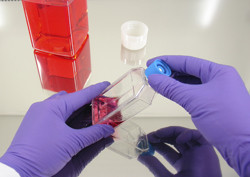Unveiling the genomic architecture in neural stem cells
For years, scientists believed that we had a finite number of neural cells that, once damaged (due to neurodegenerative disease, for instance), could not be replaced. The discovery of multipotent cells in the adult mammalian brain revolutionised neurobiology and opened up new avenues for the treatment of neurodegenerative diseases. Understanding of the biology of neural stem cells (NSCs) is crucial in order to successfully isolate and manipulate them. The EU-funded project CISSTEM (Cis-regulatory logic of the transcriptional control in neural stem cells) studied NSCs at transcriptional and epigenetic levels. The project focused on cis-regulatory elements, or non-coding DNA regions, regulating transcription of the nearby genes. A multidisciplinary approach connected computational prediction with in vitro and in vivo experimental validation using different vertebrate model systems. Comparative sequence analysis allowed researchers to find, categorise and understand functional sequences in several genomes: fish, mouse, rat, dog and human. CISSTEM identified genomic regions functionally active in the NSC through direct mapping of DNase I hypersensitivity sites. Scientists found over-represented motives in proximal and distal elements around NSC expressed genes. A bioinformatics genome browser interface incorporated putative regulatory elements, as well as the results from gain- and loss-of-function studies of transcription factors. CISSTEM validated the elements acting as transcriptional enhancers in different neural cell cultures, organotypic slice cultures and vertebrate transgenic animal models. This dissection of DNA elements that governs NSC-specific gene expression significantly enhances our understanding of how these cells are regulated. CISSTEM performed interpretation of functional and comparative genomics results, and released the data through its project browser. These data will enable further research and potentially stimulate new discoveries in neurogenesis.







